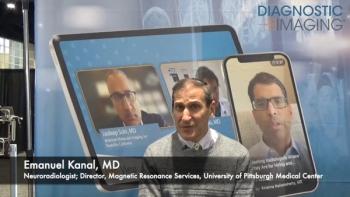
Lab distributes DICOM images without PACS
A Spanish radiology laboratory has unveiled an alternative, PACS-less, approach to the distribution of digital images throughout the hospital enterprise. The IMAC system involves a Web server that allows the query and retrieval of images stored in a
A Spanish radiology laboratory has unveiled an alternative, PACS-less, approach to the distribution of digital images throughout the hospital enterprise.
The IMAC system involves a Web server that allows the query and retrieval of images stored in a DICOM archive. The images can be viewed using a small Java program that is executed inside the browser.
The system offers several advantages over traditional PACS, according to Josep Fernandez-Bayô, of UDIAT Centre Diagnostic at Corporacio Sanitaria parc Tauli, in Sabadell, Spain.
"It is easy to install and maintain, is platform independent, allows images to be manipulated and displayed efficiently, and is easy to integrate with existing systems that are already making use of Web technologies," he said. "The system is user-friendly and can easily be used from outside the hospital if a security policy is in place."
Fernandez-Bayô said the simplicity and flexibility of Internet technologies makes them preferable to the more complex PACS workstations. The system can help improve and simplify interdepartmental relationships in a filmless hospital environment.
Fernandez-Bayô and colleagues displayed it at RSNA in an infoRAD exhibit, "An Integrated Low-cost RIS and IMAC System for the Management of a Digital Radiology Department with Web and Java Technologies."
IMAC is based on two DICOM archives, one commercial (a Siemens MagicStore with three Jukeboxes and a total capacity of 0.3 terabytes) and one a locally developed unit called a RAIM Server, which has a DVD jukebox and an array of hard disks with a total storage capacity of 1.5 terabytes. Currently, only three modalities (1 CR in the emergency department and 2 MRIs) store examinations to the MagicStore. The remaining modalities (2 CT, 1 XA, 4 US, and 1 CR) store studies on the RAIM Server.
In order to query and retrieve stored images, all workstations interact with the RAIM Server, which in turn queries the MagicStore and sends back answers to the workstations as a merged list, Fernandez-Bayó said. When the RAIM Server receives a request from a workstation to retrieve examinations that it is not storing, it instructs the MagicStore to send those examinations directly to the requesting workstation.
"In other words, the archive MagicStore is centralized and integrated by our own RAIM Server," he said.
In order to distribute the images outside the radiology department, the RAIM Server has a Web server with the locally developed DICOM Java viewer, called RAIM Java.
"This system allows any physician or clinician to view images with a Web browser without any specific software installation," Fernandez-Bayô said.
Newsletter
Stay at the forefront of radiology with the Diagnostic Imaging newsletter, delivering the latest news, clinical insights, and imaging advancements for today’s radiologists.



























